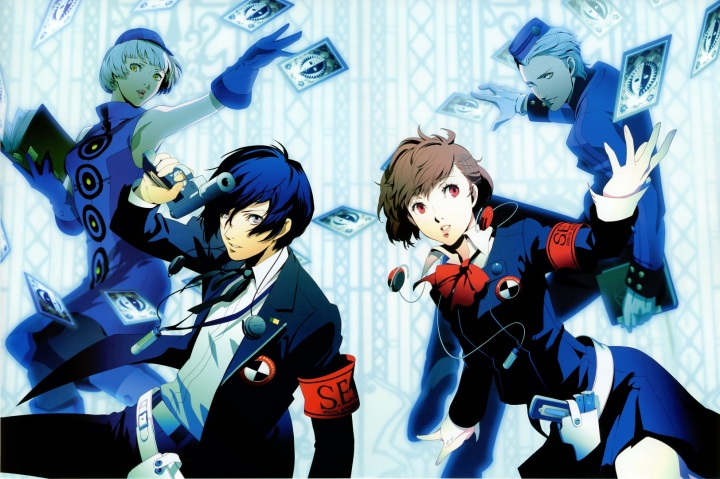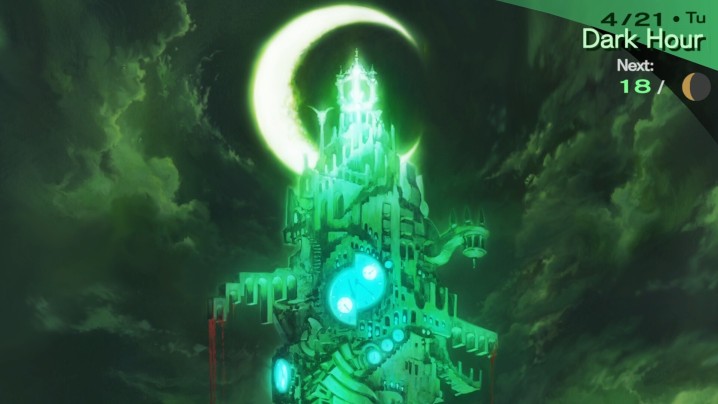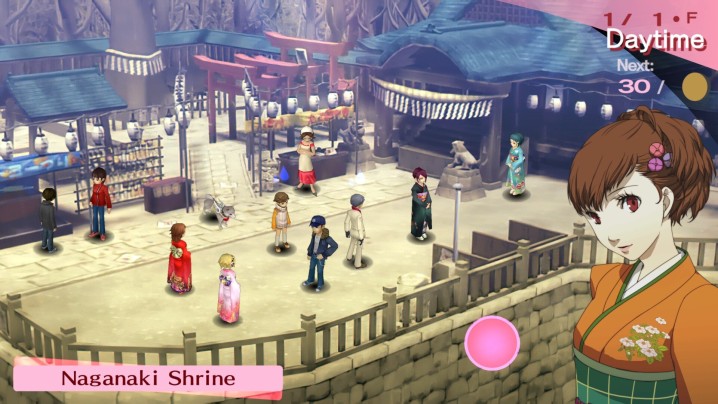In 2006, developer Atlus would pave its future with an important game release: Persona 3 for the PlayStation 2. It was a smash-hit, finally taking the JRPG series mainstream in a way that its first two games didn’t. Persona 3 laid the groundwork for what would eventually be Persona 5’s monumental mainstream success and Atlus’ crown jewel.
Now, fans have a chance to return to the groundbreaking RPG with its latest remaster, which brings its PlayStation Portable version, Persona 3 Portable, to modern platforms including Nintendo Switch, PlayStation 4, Xbox, and PC. The rerelease lets new fans experience the genesis of now iconic gameplay systems like its influential social component and its “One More” battle system.
For those coming to Persona 3 for the first time here, the trip down memory lane might feel a little jarring at first. Persona 5 would significantly expand its gameplay one decade later, leaving the rerelease feeling retro in comparison. Even so, those who were introduced to the series through Persona 5 will still find plenty of reasons to dive into Persona 3, thanks to a fantastic story and characters that have aged more gracefully than its systems.
Retroactive
At first glance, Persona 3 Portable can feel like a relic, something emphasized by the way Atlus chose to compress the game onto the PSP. One of its biggest concessions is that it’s presented in a point-and-click visual novel format instead of having a 3D character model able to roam around like in Persona 4 Golden or Persona 5. As such, static sprites are placed in background areas and characters are interacted with via cursor.
The point-and-click presentation may feel jarring to newcomers, but I find that it imbues the game with a charming, retro feel. And though that can be dated, the 3D models and environments were kept where it really matters: in battles and Tartarus exploration.

Sometimes, certain scenes in the story don’t land as hard because of Portable’s limited presentation. In the PS2 version, you can see the entire main cast gathered around a table as one character paints a picture of the story’s main antagonist. You can feel the urgency and dread in the room as the cast focuses intensely on their words. That tension is lost in Portable, where character cutouts only appear on the screen for those who are currently speaking and the rest of the cast isn’t in view.
Since this is a remaster and hardware limitations weren’t a factor here, I wound up wishing Atlus had taken the extra effort to give players the option to either play in 3D or the point-and-click presentation. Being constrained to the Portable version makes the remaster feel a little dated.
It’s about the journey, not the destination
Any complaints about Portable’s presentation are outweighed by the parts of the package that have aged gracefully. Persona 3’s story still holds up after all these years because of how it links its themes to the backgrounds of each of the main characters. The game follows a group of schoolkids who form the Specialized Extracurricular Execution Squad, or SEES. On the surface, they’re just a regular after-school club. In reality, the group is tasked with investigating a strange tower called the Tartarus that appears in place of the school during the “Dark Hour,” a mysterious 25th hour that occurs after midnight. The members of SEES are all Persona users, meaning they have special powers to fight off the Shadows that appear during the Dark Hour as they progress up Tartarus.
Death serves as a major theme here, which makes the game’s tone darker and bleaker than Persona 4 and 5. That’s exemplified through many of the characters featured in the game. For example, one of Persona 3’s Social Links (Persona 5’s equivalent of Confidants) tells the story of a young author with a terminal illness. Another social link revolves around an old couple lamenting the death of their son in an accident.

While Persona 5‘s similar Social Links rewarded players with major benefits, Persona 3‘s don’t have as strong an incentive. Instead, they’re more worth experiencing just for the stories they reveal, which bring emotional depth to the RPG. For those who love Persona 4 and 5 more for its storytelling than its RPG systems, P3P still holds a special (and at times harrowing) place in the series.
I’m also impressed by the sheer amount of new content this version provides. It features new scenarios and cameos from Persona 4 (which would launch just two years after 3), as well as another boss. Portable is also the only version of Persona 3 that lets players select a female protagonist. Playing as the female protagonist opens up exclusive Social Links that the original male protagonist doesn’t have and provides even more replay value on future playthroughs. She’s bubblier than her male counterpart, acting as a much-welcome counterbalance to a depressing story.

Though there’s a lot of content here, it stops short of being definitive as it’s missing Persona 3 FES: The Answer epilogue. FES, an enhanced version of the original Persona 3, featured a playable expansion that explored events after the conclusion of the main game’s story. The Answer wasn’t as critically acclaimed as the main story as it didn’t incorporate the Social Link mechanics, but it fleshed out the main cast more and even pit the characters against each other in battle, in contrast to the constant camaraderie seen in the main game. The Answer also introduced a completely brand-new character, Metis, who is entirely absent in Portable.
The epilogue’s inclusion and fun factor are divisive among the Persona fan base, but leaving it out still makes Portable feel somewhat incomplete, even if it is widely considered the definitive version of Persona 3.
The definitive experience
Though I’m happy to see the RPG made accessible on modern platforms, it did leave me yearning for some sort of proper remake that includes its entire story, as well as updated quality of life touches from Persona 5. Though Persona 3 isn’t as visually stylish as 5, there are still traces of personality. The combat user interface is built to look like a revolver’s cylinder, fitting the game’s themes of death and referencing the pitch-black way characters summon their Personas: by shooting themselves in the head.

Fans of Persona 5’s amazing music will most likely also enjoy Persona 3’s rap and hip-hop-infused soundtrack. Both the male and female protagonists have different music themes, with the new female protagonist having some more rock ‘n’ roll-type tracks that sound like they could’ve also been in Persona 4.
While Persona 3 isn’t as mechanically fleshed out as Persona 5, it’s still a strong RPG and retains many of the core gameplay elements that newer fans come to expect from a modern Persona game. If players come in with the proper expectations, accepting that this is an older game, it’ll be another 100-hour time commitment worth sinking into.
Persona 3 Portable is available for PC, PlayStation 4, PlayStation Portable, PlayStation Vita, Nintendo Switch, and Xbox One.
Editors’ Recommendations












